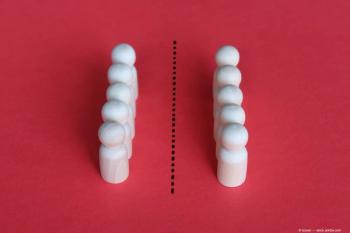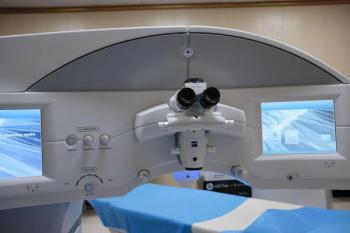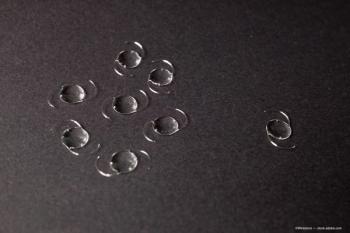
- Ophthalmology Times: April 15, 2021
- Volume 46
- Issue 7
Presbyopia-correcting IOL with nondiffractive design offers gains
Intermediate/near vision improvements are achieved without compromising distance vision.
Reviewed by Devesh Varma, MD
The model DFT015 IOL (AcrySof IQ Vivity Extended Vision; Alcon Laboratories, Inc), a new presbyopia-correcting
Related:
New mechanism of action
The study lens, Varma explained, has a new mechanism of action.
“The DFT015 IOL has a 2.2-mm zone, referred to as the wavefront-shaping X-Wave optic, incorporates 2 transition elements—1 is a slightly elevated smooth plateau that stretches (ie, delays) the wavefront, resulting in an extended focal range, and 2 is a small curvature change that shifts the wavefront, creating an extended negative focal range,” he said.
The 2 transition elements together result in a stretched and shifted wavefront.
“When the wavefront emerging from the posterior IOL collapses onto the retina, the effect is amplified,” Varma added. “When the wavefront reaches the retina, the focal range is extended, with a stretched light pattern.”
The benefit afforded by the IOL is the extended range of vision with a visual disturbance profile similar to that of the SN60WF IOL.
In addition, the DFT015 IOL is associated with almost no halos compared with a diffractive extended depth-of-focus IOL.
Related:
2 studies
Two studies—one in the US and the other outside-the-US (OUS) trial in Australia, Canada, Spain, and the UK—were undertaken to evaluate the clinical outcomes of the DFT015 IOL and SN60WF IOL; the IOLs were each implanted bilaterally in the study patients.
In the US study, 106 and 113 eyes, respectively, received the DTF015 IOL and the SN60FW IOL; in the OUS study, the respective numbers of eyes were 154 and 119.
The primary outcome measures were the binocular defocus curve, binocular distance-corrected visual acuities (VAs) at all distances, and patient-reported visual disturbances.
Results
The binocular defocus curves 6 months after implantation in both studies were similar.
“The DFT015 defocus curve was elongated with a flat peak and reached –1.5 to –2.0 D, providing about 20/32 correction,” Varma said. “The DFT015 provided similar distance vision and a superior range of vision in the intermediate range compared with the SN60WF IOL.”
Related:
Regarding the binocular distance-corrected VA at 6 months, in both studies, the DFT015 IOL provided distance-corrected intermediate VA and distance-corrected near VA that were approximately 1 line or better than those achieved with the SN60WF IOL.
The patients randomly assigned to either IOL reported they did not experience starbursts, halos, or glare 6 months after implantation. The results for both IOLs were similar.
The primary take-home message based on the results of the 2 studies is that the DFT015 with its nondiffractive design extends the range of vision, with improved intermediate and near vision compared with the SN60WF, without having a negative impact on distance vision.
In addition, the DFT015 has a visual disturbance profile similar to that of the SN60WF.
--
Devesh Varma, MD
E:
This article was adapted from Varma’s presentation at the American Academy of Ophthalmology’s 2020 virtual annual meeting. He is a consultant for Alcon Laboratories, Inc, which funded the studies under discussion.
Articles in this issue
over 4 years ago
Multicolor and autofluorescence imaging: What’s in a name?over 4 years ago
Optical dispensary conversionsover 4 years ago
Results from ophthalmology/rheumatology clinic treating uveitisover 4 years ago
Study confirms efficacy of uveitis treatmentover 4 years ago
Strategies to address challenging ocular infectionsover 4 years ago
Wet AMD: Current therapies and treatmentover 4 years ago
Standalone MIGS delivers durable IOP control in phakic eyesover 4 years ago
Predicting laser vision correction resultsNewsletter
Don’t miss out—get Ophthalmology Times updates on the latest clinical advancements and expert interviews, straight to your inbox.


















































.png)


